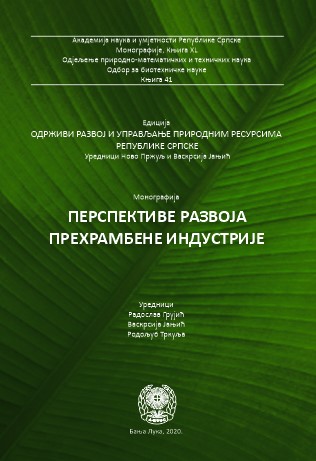Contemporary Separation Processes for Insulation of Plant Extract for Food and Pharmaceutical Process Engineering
DOI:
https://doi.org/10.7251/EORU2002177LKeywords:
Food engineering,, Insulation of plant extracts, Contemporary Separation ProcessesAbstract
We live in a time that imposes a general ecological struggle for a healthier and better life. Exhaustive lifestyles require a rapid increase in research in the food industry, in order to improve food quality and to respond to the demands of the human organism. Consumers demand from the modern chemical industry to develop new technologies that will fit with the general modern and environmentally friendly trends in the world, that produce finished products in accordance with strict ecological criteria (Lisichkov et al., 2017). The significance and prospect of natural antioxidants in the production of healthy food is indicated by a large number of scientists and nutritionists around the world. In pharmacy, a relationship was established between free oxygen radicals and their influence on the pathogenesis of arteriosclerosis, cancer, increased blood pressure and heart disease on the one hand, and antioxidants and free radicals on the other (Lisichkov and Najdenova, 2005). The problem of isolating natural plant antioxidants is quite complicated. In fact, they are particularly sensitive to elevated temperatures, oxygen from the air, light and various types of organic solvents. Hence, there is a need for finding alternative separation procedures for the isolation of bioactive components (Najdenova and Lisichkov, 2005). In contrast to classical extraction, alternative extraction methods (ultrasonic extraction, microwave extraction, supercritical fluid extraction) have a number of advantages over classical, primarily of practical and ecological character. These unconventional extraction procedures take place under favorable operational conditions (low temperatures) and with the use of safe, green solvents, whereby a large amount of energy for regenerating solvents is not used (Lisichkov and Kuvendziev, 2009). The purpose of this work is to present the application of precise process ecotechnological procedures for the isolation of bioactive compounds from selected matrices of plant origin.
